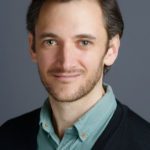Présentation
Computer Vision & Computational Optics for Bioimage Informatics
Eugene “Gene” Myers:
Best known for contributing to the early development of the BLAST tool for sequence analysis. His 1990 paper (with Stephen Altschul and others) describing BLAST has received over 62,000+ citations making it amongst the most highly cited papers ever. Myers was also the Vice President of Informatics Research at Celera Genomics, where he was involved in the sequencing of the human genome, as well as the genomes of Drosophila and mouse. In 2012, Myers moved to Dresden to lead a new center for systems biology.
Abstract:
Our group has been actively pursuing the idea that with great microscopes and great informatics we will be able to truly digitize models of cells, tissues, and organisms through time with information about the genetic and proteomic states of each cell layered there on. The belief is that these atlases combined with optical observations of labeled entities will accelerate the life sciences by allowing us to visualize these systems from any vantage point and as a system, thus leading to many discoveries such as the nature of the genetic control of fly wing development.
Since arriving in Dresden five years ago we have made significant progress on hard segmentation and tracking problems with the use of AI techniques developed in the computer vision community. We will present several examples of current projects that exemplify various such techniques and present the quality of results we obtain with them.
Despite these improvements we still find ourselves at the limit of what can be determined because of the limited resolution and contrast of the imagery. Fortunately, advances in microscope componentry such as adaptive optics, spatial light modulators, and ultra high-speed cameras present opportunities for improving the underlying imagery. We will report on two microscope development projects in our lab, where the aim is to improve resolution by making multiple observations of a volume and from them computing a better reconstruction of the object under observation using deep neural networks. We think better microscopy through computation and dynamic onboard control of acquisitions is an emerging trend that we generally call computational optics.
Due to security policy in Institut Pasteur, please register before if you plan to come to this meeting
https://c3bi.pasteur.fr/seminars-computer-vision-&-computational-optics-for-bioimage-informatics/
Localisation
Bâtiment: Batiment François Jacob
Adresse: Institut Pasteur, Paris, France

